It’s hard to believe, but it’s true: for years we’ve lived barely more than half an hour’s drive from this castle and I’ve now visited it for the first time – and was very pleasantly surprised…
Page Contents (click line to jump the text)
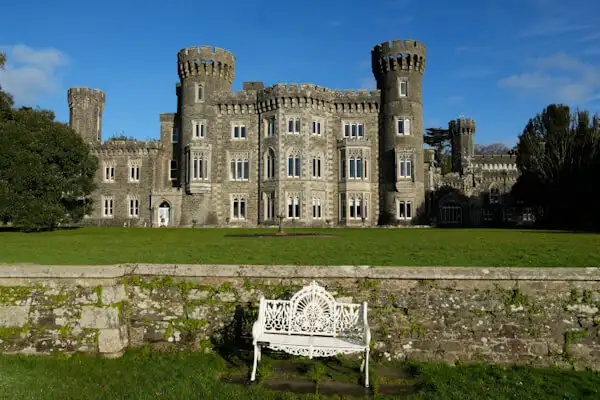
Intro and travel report
We have had our second home on the south-east coast of Ireland, not far from Wexford, for a good 10 years now. We come from Germany.
In the south of Wexford is the district of Johnstown and there is a castle there. I’m a big fan of castles and have visited many of them all over Ireland. But I must have somehow overlooked this castle on my doorstep. Unbelievable…
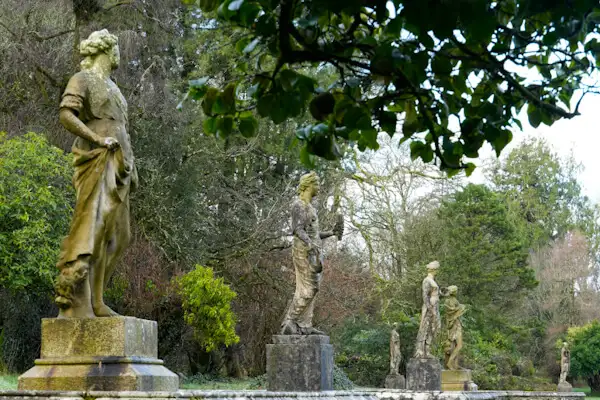
It’s the middle of January and I fancy a trip with my new camera. So why not take some new photos in Wexford and finally visit Johnstown Castle?
Thought, said, done. The weather is mild, around 10 degrees and a pleasant mixture of sun and cloud, so I set off. A few photos of Wexford on the way, then a short drive to the castle.
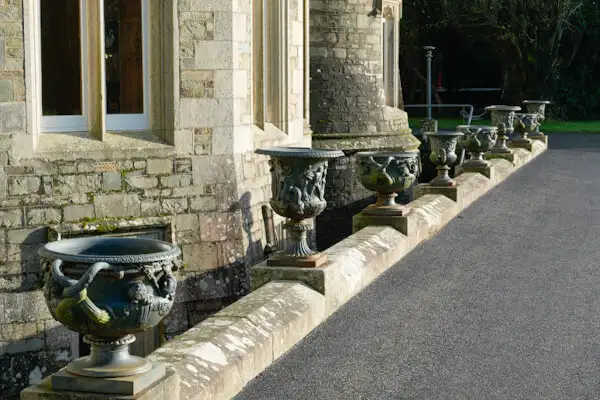
The way to the castle is already well signposted in Wexford and I can save myself the sat nav. A well-kept entrance, good parking and I enter the visitor centre. A lovely café smiles out at me – mental note: ‘I’ll have lunch here later’.
A friendly welcome: just the museum and grounds, or a guided tour of the castle? I want to enjoy the beautiful weather and don’t really want to spend any time inside, so I decide in favour of the smaller ticket.
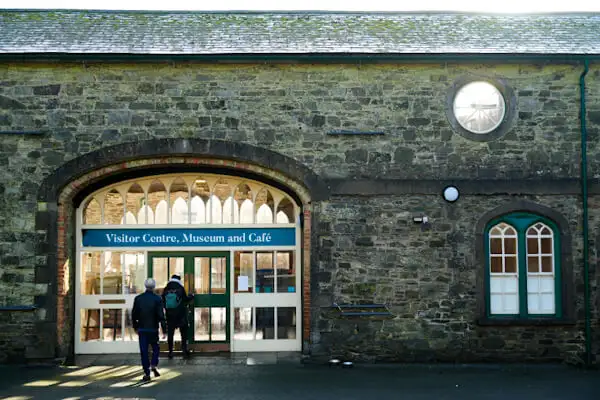
I walk through the museum into the castle park. I only want to visit the museum briefly and don’t expect much – but far from it!!!
A large farm belongs to the castle and the buildings of the old courtyard house an agricultural exhibition.
In fact, it is so much more than that: in addition to agricultural equipment from earlier times, there are carriages, vintage tractors and cars, old bicycles, lots of furniture and everyday objects from the rural population and an incredible amount of information about life in the Irish countryside in the past.
An entire cottage has been recreated here, and workshops of craftsmen: shoemakers, blacksmiths or sewing workshops – fully equipped. The whole thing runs through many rooms and over two floors, so it’s huge!
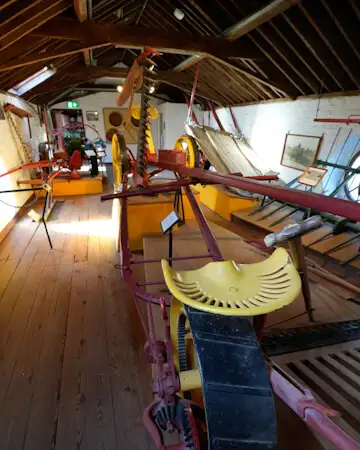
There are also separate rooms on the great famine caused by the potato blight in Ireland in the mid-19th century and the subsequent emigration to America and the world. I already know this topic from a similar exhibition in New Ross, where the museum ship Dunbrody is also located – not far away and also highly recommended.

But here in the museum at Johnstown Castle, too, a lot of effort has been made to present the subject very clearly.
And I’ve already spent much more time inside than I wanted to – so get out into the park at last!
Directly behind the museum is a lake and to the right is the castle – and what a beautiful castle it is! Perfectly preserved, it shines over the lake like a fairytale castle – really! Many turrets and large windows suggest that the builders had representation in mind – there were probably plenty of receptions and balls here in its day.
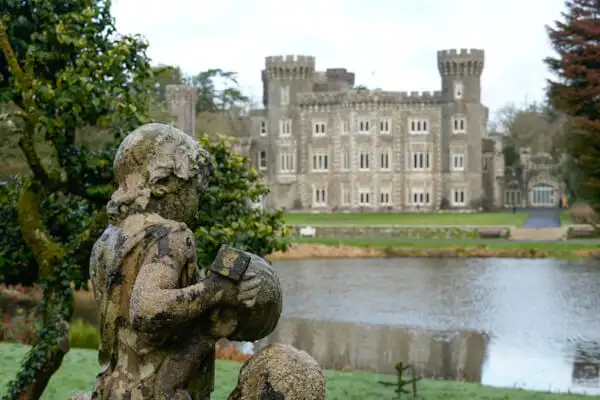
Incidentally, its time was in the 19th century when the castle was built. However, the first castle on this site was built in the 12th century and belonged to the Anglo-Norman Esmonde family. The ruins of the old castle can still be found on the site.
The castle park covers around 120 acres, or about 48 hectares. Together with the farm, it is around 1000 acres, about 400 hectares of land.
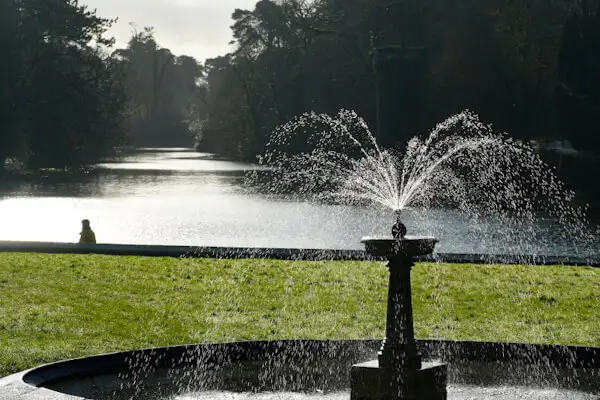
There are three lakes in the castle park that you can walk around, a beautiful old tree population, a few decorative elements and a walled garden. Walled gardens are often found in castles and manor houses of the period.
Spices and herbs were grown there, as well as fruit and lots of flowers. Exotic plants and orangeries can also be found there, protected from animals by the wall. It was not uncommon for the lords to keep deer and other huntable game in their parks – and deer also like to eat flowers.
Today, there are no more deer roaming free here, but I have come across some very beautiful peacocks in the park several times.
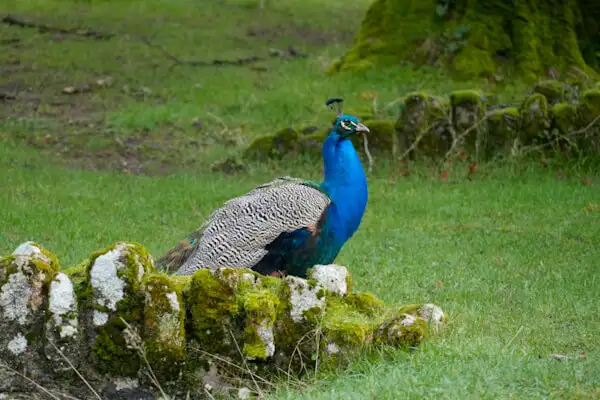
Now, in mid-January, there’s not much to see in the Walled Garden, but I can well imagine coming back again in spring or early summer.
Incidentally, the park is lovely for a walk and as I’m out and about on a Sunday, I always see other visitors, walkers and dog lovers wandering around.
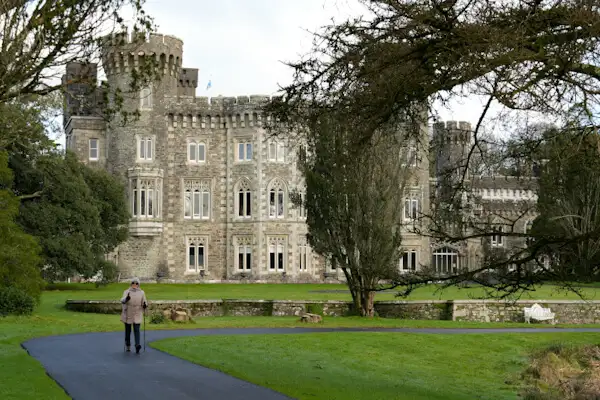
My mental note ‘lunch at the Visitor Centre café’ comes back to me, because my stomach is growling and it’s well past lunchtime. In short: the café is very nice, the food was great and I get back into the car feeling completely satisfied.
Some background to Johnstown Castle
Johnstown Castle is located in County Wexford, Ireland, and is an important example of neo-Gothic architecture. The estate has its origins in the 12th century, when it was owned by the Anglo-Norman Esmonde family. In the early 19th century, the present castle was built by the Grogan-Morgan family, who characterised the neo-Gothic design.
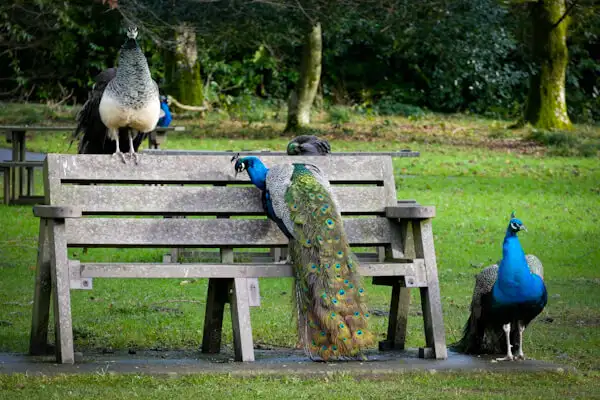
The gardens were designed by Daniel Robertson, a well-known landscape architect who also worked on the Powerscourt Gardens. These gardens include a variety of exotic plants and lakes that surround the castle and add to the attractiveness of the estate.
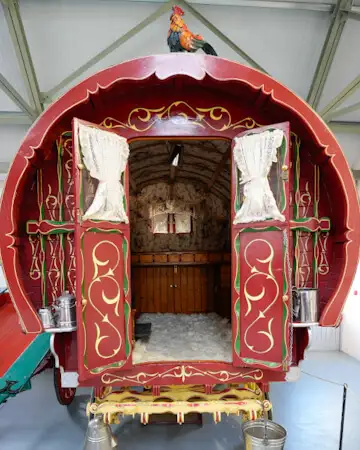
After the death of the last heiress of the Grogan-Morgan family in 1945, the castle was handed over to the Irish state. Today it is managed by the Irish Heritage Trust and serves as the site of the Irish Agricultural Museum, which documents Ireland’s agricultural history.
The property combines historic architecture, carefully landscaped gardens and museum use and is an important part of County Wexford’s cultural heritage.
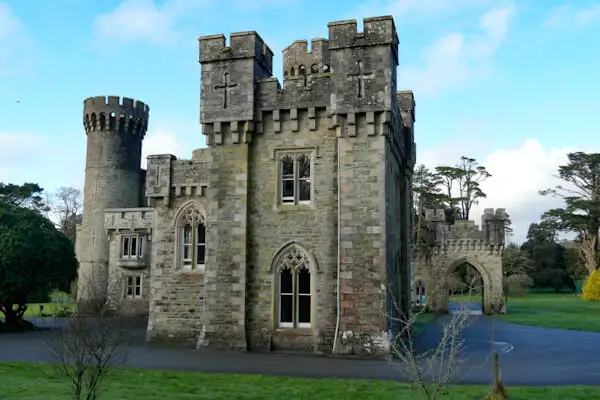
Conclusion
To summarise in a nutshell: If you’re travelling in the Wexford region, make sure you visit Johnstown Castle – I highly recommend it! The castle is beautiful and the castle grounds are gorgeous.
The museum is not only informative, but also beautifully designed. And above all, you’ll learn a lot about the lives of ordinary people in Ireland in the past, whereas castles usually only tell you about the lives of their rich elite.
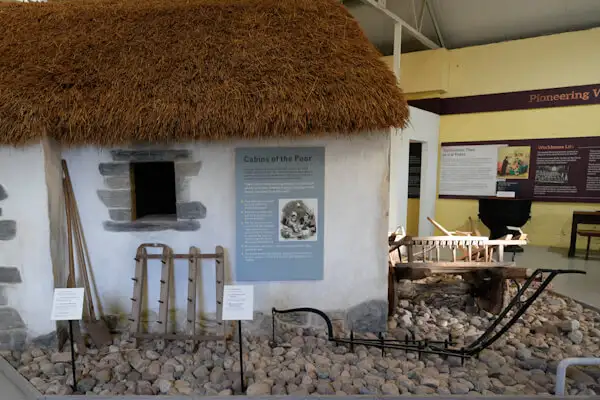
I’m sure you’ll learn about rich aristocrats and their lives on the guided tour of the castle, so you really do learn about both the rich and the poor at Johnstown Castle – remarkable.
I haven’t done the tour of the castle yet, but I’ll do that on my next visit…
I hope you have lots of fun in Wexford and at Johnstown Castle!
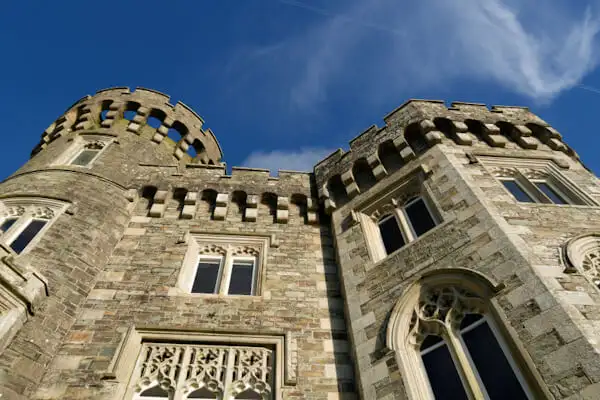
More interesting articles for you
WEXFORD – SO OLD – SO NEW!
WICKLOW TOWN – THINGS TO SEE AND DO
HOOK HEAD LIGHTHOUSE – THE OLDEST ACTIVE LIGHTHOUSE IN THE WORLD
THE REBELLIOUS TOWN OF ENNISCORTHY
Cover picture: Johnstown Castle with lake and park (Photo: Ulrich Knüppel-Gertberg)